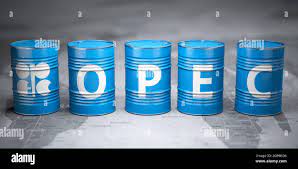Speaking at COP28 in Dubai, Saudi Aramco CEO Amin Nasser repeated calls for more upstream investment in the interests of both energy security and to meet growing global demand.
Those arguing against fossil fuels have criticized oil and gas industry expansion plans. However, the United Arab Emirates — a fellow producer and OPEC-plus member — has taken a more inclusive approach at this year’s COP, inviting all industries to participate and offer solutions to cutting emissions, rather than production.
Nasser argued during a panel on Monday that global investment in the upstream sector has dropped by 40% since 2014 from around $740 billion to between $480 billion and $500 billion.
“Considering the growth and the higher demand we are anticipating in the future; I think we need more investment,” he said. “If you look at existing fields today and the level of maturity that we are seeing between conventional resources and unconventional resources, you are looking at a 7% annual decline.”
Meeting Demand?
Many analysts, however, believe that underinvestment in new oil and gas supply will not be a problem for global energy markets this decade, thanks partly to a dramatic improvement in capital efficiency.
Indeed, Energy Intelligence analysis suggests that both oil balances and upstream project tracking indicate a well-supplied market through at least 2026. Global oil markets will see an average 1 million barrels per day of new liquids added each year from non-OPEC plus alone — just enough to meet expected annual global demand growth of 900,000 b/d through 2028, even after natural declines.
Energy Intelligence sees demand steadying around 105 million b/d later this decade before declining from 2030.
Aramco is working to raise its production capacity from 12 million b/d to 13 million b/d by 2027.
“We anticipate there is going to be further growth in demand going forward and as such you need that investment to meet the call on our production and at the same time to manage the decline in existing fields,” Nasser added.
OPEC expects global demand to rise by 2.25 million b/d next year. In comparison, the International Energy Agency anticipates oil demand growing by just under 1 million b/d, while Energy Intelligence envisages 1.1 million b/d growth.
Deepening Cuts
Nasser’s call for more investment comes as OPEC-plus faces a number of challenges from non-OPE Csupply growth to near-term questions about oil demand.
The group last week delivered a new set of deeper and extended voluntary oil production cuts, which some analysts expect to tighten markets in the first quarter of 2024 and support the oil price.
“An OPEC-plus which remains sufficiently united among its largest members, may be even more influential on prices in 2024,” Tellimer Research’s head of equity research, Hasnain Malik, said.
Saudi Arabia’s energy minister, Prince Abdulaziz bin Salman, told Bloomberg in an interview this week that the kingdom could extend its voluntary cut of 1 million b/d beyond March if required.
Diversifying The Mix
In parallel to its upstream expansion, Aramco is investing in renewable energy projects, hydrogen and carbon capture and storage in line with the kingdom’s broader plans to diversify its economy and energy mix.
“If we invest in technologies that will capture carbon, that utilize and store carbon and make it more affordable, cheaper — that will make a difference. Aramco is doing this, and they are doing it efficiently. They are capturing about 800 million tons per year,” Saudi Arabia’s finance minister, Mohammed al-Jadan, said.
Saudi Arabia and other oil exporting Gulf states will use income generated by their upstream sectors to help fund the energy transition.

 Iran Energy News Oil, Gas, Petrochemical and Energy Field Specialized Channel
Iran Energy News Oil, Gas, Petrochemical and Energy Field Specialized Channel



